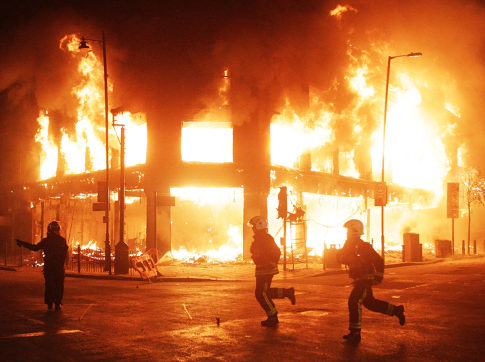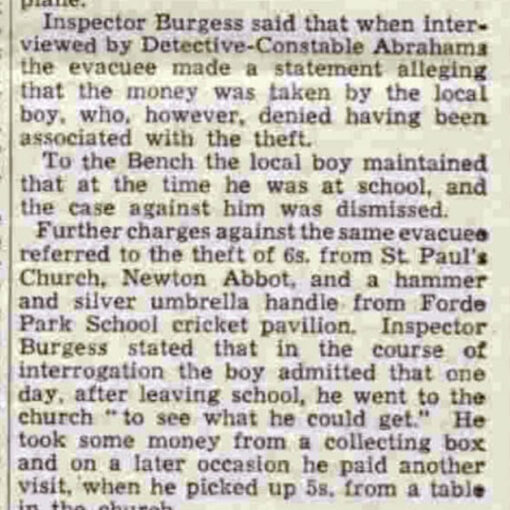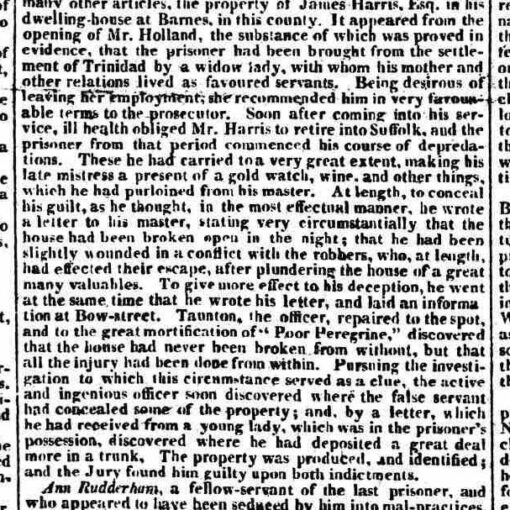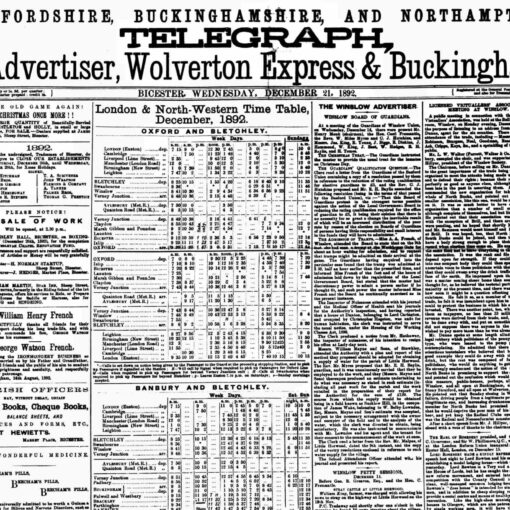The Kensington Post – Friday 14 October 1927
ACCIDENTS

Colliding with a motor ‘bus at the junction of Wesley Road and Shakespeare Avenue, Stonebridge, Miss Emily Cox, of 28 Pitfield Way, Stonebridge, who was riding a bicycle, was injured, and after treatment by Dr. Bateman, was taken home in the doctor’s car.
Edward Low, of 19 Winchelsea Road, Harlesden, was taken to Park Royal Hospital with concussion as the result of an accident while riding his cycle at Stonebridge Park.
Edward Morent, of Ducane Road, Hammersmith, was knocked down by a car as he was alighting from a ‘bus at Scrubb’s Lane, and was taken to Hammersmith Hospital with abdominal injuries.
Mr. James Walker Day, of 78 Manor Park Road, Harlesden, was knocked down by a cyclist.
Thomas Finch, of North Kensington, received slight injury to his leg and was taken to hospital.
A collision occurred at the junction of College Road and Clifford Gardens on Saturday between a car and a motor cycle driven by Mr. Frederick Tweedle, of 57 Malvern Road, with Mrs. Tweedle in the side-car, and a Miss Stubbing, of College Park, was also a passenger. Mrs. Tweedle complained of shock, and Miss Stubbing was attended by a doctor.
As he stepped off the curb at Ducane Road, Hammersmith, to board a ‘bus on Monday, Mr. Cecil Nyburg, of East Acton, was knocked down by a motor cyclist. An L.C.C. ambulance happened to be passing and took him to Hammersmith Hospital, but he declined to be attended to there.
Mrs. Edith Miller, of 15 Albert Road, Kilburn, was knocked down by a motor cycle at Cricklewood Broadway, and was taken to Willesden Hospital, where she was detained, suffering from shock and slight concussion.
Explanation, Analysis, and Use
Historical Context and Life in 1927:
In 1927, motor vehicles such as cars, buses, and motorcycles were becoming more common on British roads. This article highlights the growing issue of road traffic accidents in urban areas during a period when road safety laws were relatively undeveloped. Pedestrian crossings, traffic lights, and road signs were still sparse, and the Highway Code was only published in 1931. For many, this period marked the transition from horse-drawn vehicles to mechanised transport, leading to frequent collisions and accidents due to unfamiliarity with traffic management.
The Law and Road Safety in 1927:
At the time, laws regarding road safety were still in their infancy. The first driving test was not introduced until 1935, and drivers required minimal formal training. Protective infrastructure such as cycle lanes was nonexistent, placing cyclists at great risk in shared roadways. The article reflects a period when victims often relied on immediate local help (like Dr. Bateman’s assistance for Emily Cox) and when ambulances, like the L.C.C. vehicle, were beginning to provide emergency response services.
Use for Genealogists:
For genealogists, articles like this provide invaluable insights into individuals’ lives and events that shaped their experiences. The specific addresses and full names allow researchers to locate ancestors in historical records, such as census data or electoral rolls. For instance:
- Emily Cox of 28 Pitfield Way might appear in local directories or voters’ lists.
- Edward Morent’s injury near Scrubb’s Lane may indicate a family connection to the Hammersmith area.
Use for Historians:
Historians studying urbanisation and transport evolution can glean valuable information about the societal impact of motorisation. The accident details reveal the dangers pedestrians and cyclists faced, reflecting broader issues like inadequate road safety measures. The mention of “shock” and “concussion” also shows how medical treatment and terminology evolved.
The Bigger Picture:
This article reflects the growing pains of a modernising society. Urban life in the 1920s was characterised by rapid industrial and technological changes, which brought both progress and challenges. The listed incidents highlight how transport accidents affected daily lives across class boundaries, as victims ranged from housewives like Edith Miller to professional individuals like Mr. Tweedle. This provides a snapshot of life in interwar Britain and offers context for understanding how urban infrastructure developed to accommodate increasing motor traffic.
Use for Old British News:
For Old British News, this article exemplifies the value of preserving historical newspapers. It serves as a snapshot of community life, offering localised stories that would otherwise be lost to time. The names and incidents can help bring forgotten narratives to light, potentially connecting modern readers with their past or providing valuable anecdotes for community histories.
The Kensington Post

The Kensington Post was a prominent local newspaper serving the Kensington area of London. Established in 1918, it provided news coverage for the community until its eventual merger and rebranding in the late 20th century. Initially known as the Kensington Post and West London Star, the newspaper underwent several title changes throughout its publication history:
- 1918–1938: Kensington Post and West London Star
- 1938–1947: Kensington Post, Middlesex Independent and West London Star
- 1947–1958: Kensington Post and West London Star
- 1958–1972: Kensington Post, etc.
- 1972–1987: Kensington News and Post
- 1987–1997: Kensington News
- 1997–1999: Kensington & Chelsea News
These changes reflect the newspaper’s efforts to adapt to the evolving media landscape and its commitment to serving the local community’s informational needs. The Kensington Post was published by Reach PLC in London, England. Its archives, spanning from 1918 to 1999, are preserved and accessible through the British Newspaper Archive, offering a valuable resource for researchers and historians interested in the area’s history.
The West London Star was incorporated into the Kensington Post early in its history, as indicated by the combined title Kensington Post and West London Star used from 1918 to 1938 and again from 1947 to 1958. This integration suggests that the West London Star was either a predecessor or a contemporary publication that merged with the Kensington Post to consolidate local news coverage under a single title.
Throughout its publication, the Kensington Post covered a wide range of topics pertinent to the local community, including news, events, accidents, and public notices. For instance, the issue from Friday, 14 October 1927, reported on various accidents involving local residents, reflecting the newspaper’s role in documenting everyday life and incidents in the area.
The newspaper’s archives serve as a rich resource for genealogists and historians, providing insights into the social, cultural, and economic aspects of life in Kensington and the broader West London area throughout the 20th century. The detailed reports and notices offer glimpses into the lives of individuals and the community, making the Kensington Post a valuable tool for historical research and understanding the local heritage.
Road Traffic Chaos in 1927: Cyclists, Pedestrians, and Motorists in a String of Accidents Across Kensington 🚴♂️🚗🚶♀️ #1927News #KensingtonHistory #RoadSafety




